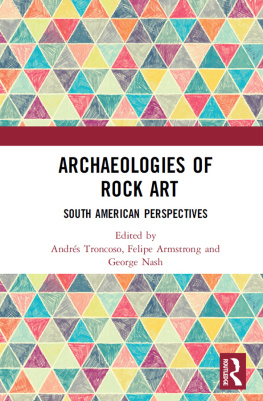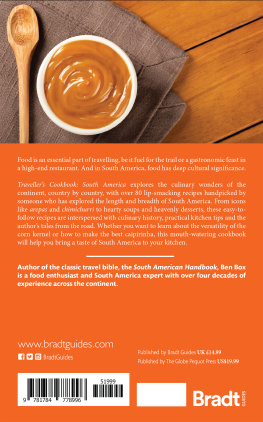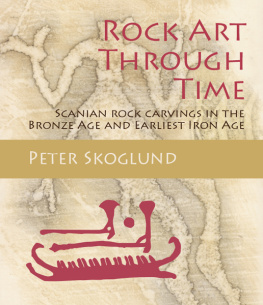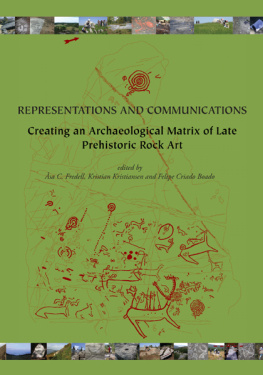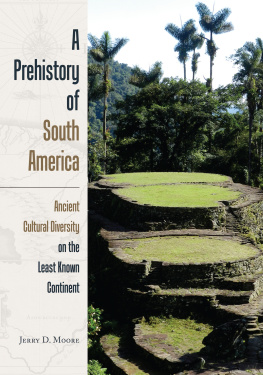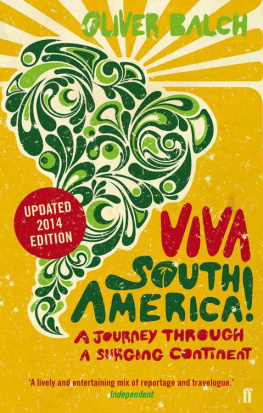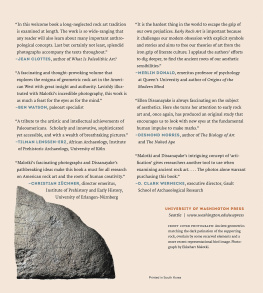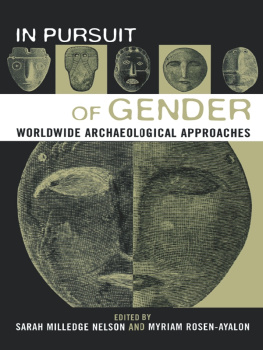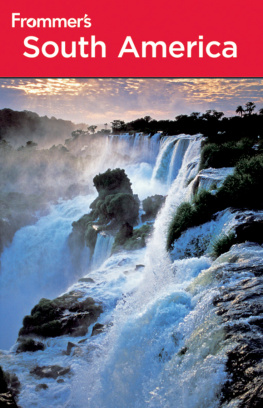Archaeologies of Rock Art
Rock art in South America is as diverse as the continent itself. In this vast territory, different peoples produced engravings, paintings and massive earthworks, from the Atacama to the Amazon. These marks on the landscape were made by all different kinds of peoples, from some of the earliest hunter-gatherers in the continent to the very complex societies within the Inca Empire. This book brings together the work of specialists from throughout the continent, addressing this diversity, as well as the variety of approaches that the archaeology of rock art has taken in South America.
Constructed of 11 thought-provoking chapters and arranged in three thematic parts, the book presents different theoretical approaches that are currently being used to understand the roles rock art played in prehistoric communities. The editors have skillfully crafted a book that presents the contribution the study of South American rock art can offer to the global research of this materiality, both theoretically and methodologically.
This book will interest a broad range of scholars researching in archaeology, anthropology, history of art, heritage and conservation, as well as undergraduate and postgraduate students who will find interesting case studies showcasing the diverse ways in which rock art can be approached. Despite its focus on South America, the book is intended as a contribution towards the global study of rock art.
Andrs Troncoso gained his archaeology degree at the Universidad de Chile, and PhD in Archaeology at Universidad de Santiago de Compostela (Spain). He also was a postdoctoral visiting fellow at the University of Illinois at Urbana-Champaign (USA). He is currently an associate professor at the Department of Anthropology, Universidad de Chile. He has directed several projects in Chile funded by the Chilean National Fund for Science and Technology (FONDECYT), National Geographic and Wenner-Gren Foundation, among others. His research focuses on the way in which rock art was engaged in the social reproduction of past communities and in the construction of landscape through history, developing comparative studies. Andrs has published books and several articles on Chilean prehistory, rock art, the Incas and landscape archaeology.
Felipe Armstrong gained his degree in archaeology from the Universidad de Chile and holds a master in Comparative Art and Archaeology from the UCL Institute of Archaeology, the same institution where he is currently completing his PhD in archaeology. He is an assistant professor in the Department of Anthropology of Universidad Alberto Hurtado (Chile). Felipe has worked on rock art from north-central Chile, assessing its role in the configuration of social and collective memory, and in the relational and sensorial fields of pre-Hispanic communities. He also works on Rapa Nuis (Easter Island) anthropomorphic objects, assessing their role in the embodied world experiences of late prehistoric and early historic islanders.
George Nash is a research fellow and former lecture at the Department of Archaeology and Anthropology, University of Bristol, and associate professor at the Museum of Prehistoric Art (Quaternary and Prehistory Geosciences Centre, Maao, Portugal [IPT]). Professor George Nash has undertaken extensive fieldwork in Brazil and central Chile and is currently involved in rock art research in Israel and Mongolia.
Archaeologies of Rock Art
South American Perspectives
Edited by Andrs Troncoso, Felipe Armstrong and George Nash
First published 2018
by Routledge
2 Park Square, Milton Park, Abingdon, Oxon OX14 4RN
and by Routledge
711 Third Avenue, New York, NY 10017
Routledge is an imprint of the Taylor & Francis Group, an informa business
2018 selection and editorial matter, Andrs Troncoso, Felipe Armstrong and George Nash; individual chapters, the contributors
The right of Andrs Troncoso, Felipe Armstrong and George Nash to be identified as the authors of the editorial material, and of the authors for their individual chapters, has been asserted in accordance with sections 77 and 78 of the Copyright, Designs and Patents Act 1988.
All rights reserved. No part of this book may be reprinted or reproduced or utilised in any form or by any electronic, mechanical, or other means, now known or hereafter invented, including photocopying and recording, or in any information storage or retrieval system, without permission in writing from the publishers.
Trademark notice: Product or corporate names may be trademarks or registered trademarks, and are used only for identification and explanation without intent to infringe.
British Library Cataloguing-in-Publication Data
A catalogue record for this book is available from the British Library
Library of Congress Cataloging-in-Publication Data
A catalog record for this book has been requested
ISBN: 9781138292673 (hbk)
ISBN: 9781315232782 (ebk)
Typeset in Sabon
by Apex CoVantage, LLC
Contents
ANDRS TRONCOSO, FELIPE ARMSTRONG AND GEORGE NASH
DANAE FIORE
FRANCISCO VERGARA AND MARA BASILE
FRANZ SCARAMELLI AND KAY TARBLE DE SCARAMELLI
M. ANDREA RECALDE
FRANCISCO GALLARDO I., GLORIA CABELLO B. AND GONZALO PIMENTEL G.
GEORGE NASH
DANIELA VALENZUELA AND INDIRA MONTT
CARLOS A. ASCHERO
FELIPE ARMSTRONG, ANDRS TRONCOSO AND FRANCISCA MOYA-CAOLES
RAONI VALLE
Carlos A. Aschero obtained his degree in anthropology from the Universidad de Buenos Aires (UBA), Argentina, and is currently Principal Researcher at the National Council of Scientific and Technical Research (CONICET-ISES, CCT-Tucumn), Argentina. He was a professor at Buenos Aires and Tucumn Universities from 1983 to 2016. He directed 11 doctoral theses in both universities as well as different research projects (PIP-CONICET and PICT-FONCyT) in Argentinian Puna and Patagonia. His main research has been on hunters-gatherers rock art, lithic technology and subsistence, and mobility patterns. Since 2016 he has been directing two research programs in Antofagasta de la Sierra and Coranzul (Puna) and north-western Santa Cruz (southern Patagonia).
Mara Basile holds a PhD from the Universidad de Buenos Aires (UBA), Argentina. She is a researcher at the National Council of Scientific and Technical Research (CONICET-UBA-IDECU), Argentina. She has been a member of the Archaeological Project Chaschuil-Abaucn (www.proyectopacha.com.ar) since 2002. Her main research interest is to delineate the visual languages deployed on the surfaces of rocks and portable objects (pottery, bone, pumpkin, wood or metal) that circulated over time in different places of the Fiambal Region, north-west of Argentina.
Gloria Cabello B. obtained her degree in archaeology from the Department of Anthropology of Universidad de Chile. She holds a masters in Museology and Heritage Conservation from the University of Geneva (Switzerland) and a PhD from the Universidad de Buenos Aires (Argentina). Gloria was an external research associate of the Research Centre of the Desert Man (CIHDE, 20112015), and since 2015 she has been contributing to the Centre for Intercultural and Indigenous Research (CIIR). She was co-researcher in a FONDECYT project (1130279) about Tarapac. Her research and publications focus on rock art and pre-Columbian art.

